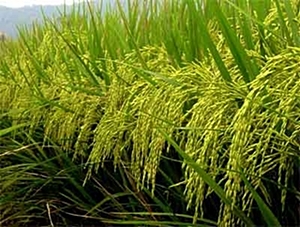BANGKOK, May 4 – The world rice harvest for 2012 is expected to surpass the strong showing of 2011 as the erratic climate conditions caused by the La Nina weather phenomenon dissipate and farmers increase their plantings, according to an initial forecast by the Food and Agriculture Organization of the United Nations (FAO) in its Rice Market Monitor released on Friday.
FAO is predicting world paddy production of 732.3 million tonnes (488.2 million tonnes on a milled basis) for 2012, a 1.7 percent or 12.3 million tonne increase over its estimate for total production in 2011. Last year’s total was also revised slightly downward in the Rice Market Monitor.

Asia, where rice is the staple food, will be chiefly responsible for the advances in production. Large absolute gains in output are forecast for Bangladesh, China, India, Myanmar, Pakistan, the Philippines and, especially, Thailand, which is recovering from last year’s disastrous floods. The outlook is also positive in Indonesia, Malaysia and Sri Lanka, which have already harvested their main 2012 crops.
An increase in plantings by farmers will drive higher output, although more neutral climatic conditions associated with the end of La Nina will be required to support more bountiful harvests. Worldwide, farmers are expected to up areas under planting for paddy by 1.6 percent to a total of 165.1 million hectares.
Beyond Asia, harvests should rebound in Africa (led by Mali, Senegal and Nigeria), but fall in the European Union, the United States, and in Latin America and the Caribbean.
Strong output in Asia, however, also means that the region that consumes the most rice will require fewer imports, and so FAO is forecasting that the global rice trade in 2012 will fall by 900 000 tonnes to 34.3 million tonnes, a decline of 2 percent over the record set in 2011. The decline takes into account an upward revision of 1.5 million tonnes over its initial prediction in January.
Imports are expected to rise, however, in China, Africa, the European Union, North America and Latin America.
Robust production coupled with weaker demand has created downward pressure on international prices, especially after India lifted its ban on regular rice exports.
With prices of competitors far lower, Thailand, is expected to see its sales falling sharply, even though the country is still forecast to retain its position as the leading rice exporter.
Countries such as Australia, Cambodia, India, Pakistan and Viet Nam should capture larger shares of the market as they offer more affordable rice prices.
FAO revised its estimate of world paddy output in 2011 downward by 1.4 million tonnes to a total of 720 million tonnes (480.1 million tonnes of milled rice). Nonetheless, the new figures still represent a 2.5 percent, or 17.7 million tonne, increase over world output for 2010. (FAO)




